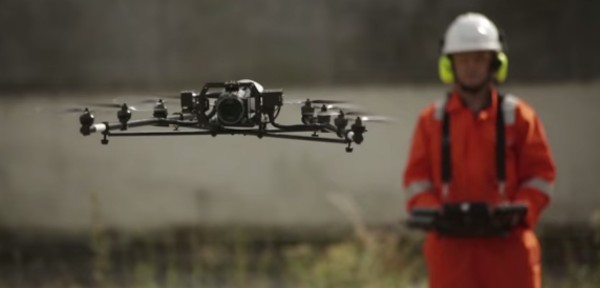Podcast: Play in new window | Download (Duration: 31:19 — 18.0MB)
UAV training in Canada and Britain, a government hearing on UAS research and development, no date from FAA on the sUAS NPRM, a UAS communications study, and drugs on a drone.
News
1st Unmanned Air Vehicle (UAV) instruction designed specifically to meet Transport Canada’s new requirements
Aerobotika Aerial Intelligence and Pacific Rim Aviation Academy have partnered to offer a UAV pilot training academy. The 2-day ground school course will cover the new Transport Canada Knowledge Requirements for Pilots of Unmanned Air Vehicle Systems for UAVs under 25 kg, operating within visual line of sight.
The curriculum includes standard pilot training, technical specifics of unmanned aircraft, industry practices and regulations, UAV rules and avoiding dangerous situations. Successful students will have met the special flight operations certificate (SFOC) knowledge requirements and receive a Letter of Completion that can be submitted to Transport Canada.
Aerobotika is an aerial systems development and operations company. Pacific Rim Aviation Academy operates out of Pitt Meadows Airport (CYPK) near Vancouver, Canada.
How should licensing work for commercial drone operators? A look at Britain’s solution
In Britain, the Civil Aviation Authority has approved three companies to provide UAV training: Sky-Futures, ResourceGroup, and EuroUSC. After receiving training, the pilot must provide a manual to the CAA describing how the UAV will be used and show they have liability insurance.
Sky-Futures provides trainees with a ground school manual to study at home for a month. After that, trainees have two days of ground school and three weeks of flight training in Spain.
The ResourceGroup training starts with an online learning program, followed by two days in the classroom, one day outside flying, then a one-day exam.
Committee Examines Status of Unmanned Aircraft Systems, Regulations, and Research
The U.S. Committee on Science, Space, and Technology held an Unmanned Aircraft Systems Research and Development hearing in January.
Chairman Lamar Smith (R-Texas) opened the hearing to examine research and development of UAS and “provide an overview of how UAS research, development and flight tests enable the integration of UAS into the National Airspace System.” Witnesses included representatives from NASA, FAA, the National Research Council, AUVSI, the Small UAV Coalition, and MIT.
Brian Wynne, President and CEO, AUVSI said, “for every day that UAS integration is delayed, the U.S. stands to lose $27.6 million in potential economic impact, according to AUVSI’s economic impact study.”
James H. Williams, the FAA Unmanned Aircraft Systems Office Manager, talked about the important role of interagency partnerships with DOD, NASA, etc. Williams noted work with NASA on, “air traffic control interoperability with the future UAS use of detect and avoid systems in controlled airspace,” and with both NASA and DOD on, “the appropriate minimum operational performance standards for UAS detect and avoid systems for UAS to remain clear of other aircraft.”
FAA Official Refuses To Give Date For UAV Rule
At the hearing, the big question was, when will the FAA issue its proposed sUAS rules? Chairman Lamar Smith asked James Williams from the FAA that question repeatedly. Williams had answers, but not the one Smith was looking for:
Smith: “Mr. Williams, when might we expect the FAA to propose some rules?”
Williams: The FAA is “doing everything we can to get that small unmanned aircraft rule out, but our main focus is to get it right.”
Smith: “When do you think you might get that [rule] out?”
Williams: “I at this point can’t give you a firm deadline.”
Smith: “Do you have a goal in mind? I mean, you’ve got a lot of people across the United States waiting. Do you have any kind of a working deadline or a working goal?”
Williams: “Our goals are to get it out as quickly as we can, as long as we get it out right.”
Smith: Is a rule is likely to come “this year or next year?”
Williams: “I can’t speculate. My own personal hope is we get it out as soon as possible, but it’s got to go through the regulatory process that has been put in place by Congress and we’re working our way through that.”
Williams added, “You’ve got to understand this is a very complex rulemaking.”
Smith: “Never mind. I can tell that I’m not going to get the answer that I was hoping for. But we’ll take your word for expediting the process….”
New unmanned aircraft research project proposed by UND to take off
The University of North Dakota plans to test “new radio communications” of unmanned aircraft beyond line of sight. The unmanned aircraft program staff at UND proposed the project, and the University’s research oversight committee approved the proposal.
UND will start with the Northrop Grumman SandShark at the Lakota, N.D., airport. Funding is with $500,000 from the North Dakota Department of Commerce and a matching $500,000 contribution from Rockwell Collins.
Meth-filled drone crashes in Mexican border town
According to Tijuana police, a hexacopter carrying more than 6 pounds of methamphetamine crashed into the parking lot of a supermarket. The DEA has reported that drones were used in about 150 drug flights in 2012 over the Mexico/US border.
Video of the Week
R/C Plane Crashes- Reveals Underwater WORLD
Footage from an RC airplane taken at The Cape Range National Park, in Exmouth Western Australia. After viewing the beautiful scenery, you’ll see the plane crash into the water and the GoPro keeps recording, capturing tropical fish and sea turtles.

